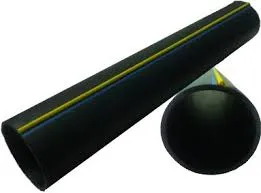Dec . 09, 2024 19:12 Back to list
Versatile Solutions for Pipe Clamps and Fittings in Various Applications
Understanding Pipe Clamp Fittings Key Components for Secure Connections
Pipe clamp fittings are essential components in various plumbing, construction, and industrial applications. Their primary function is to hold pipes securely in place, preventing unwanted movement and ensuring the integrity of piping systems. In this article, we will explore the various types of pipe clamp fittings, their uses, advantages, and considerations for selecting the right fittings for your needs.
What Are Pipe Clamp Fittings?
Pipe clamp fittings are mechanical devices designed to secure pipes and tubing to walls, ceilings, or other structures. They come in various shapes, sizes, and materials, making them suitable for a wide range of applications—from residential plumbing to large-scale industrial projects. The most common materials used to manufacture these fittings include plastic, stainless steel, and galvanized steel, which offer strength, corrosion resistance, and longevity.
Types of Pipe Clamp Fittings
There are several types of pipe clamp fittings, each designed for specific applications
1. U-Bolts U-bolts are shaped like the letter U and are typically used to secure pipes to a surface. They provide a strong hold and are easy to install with just a few nuts and washers.
2. Pipe Straps Pipe straps are flat metal bands that wrap around the pipe and attach to a surface, providing a secure and stable anchor point. They are commonly used in HVAC systems and plumbing.
3. Couplings Pipe coupling clamps connect two pipes together, allowing for expansion and contraction due to temperature changes. They are crucial in maintaining the stability of the piping system.
4. Hangers Pipe hangers are used to suspend pipes from overhead structures. They come in various designs and are essential for maintaining proper alignment and support, reducing the risk of sagging.
5. Brackets Brackets offer additional support for pipes, especially when they need to be attached to walls or ceilings at different angles.
Advantages of Using Pipe Clamp Fittings
1. Stability Pipe clamp fittings provide stability to piping systems, which is essential for preventing leaks and damage caused by vibrations or movement.
pipe clamp fittings

2. Versatility They come in various designs and sizes, allowing them to accommodate different types of pipes, such as PVC, copper, and steel.
4. Cost-Effectiveness Pipe clamp fittings are generally affordable, making them an economical choice for both residential and commercial projects.
5. Corrosion Resistance Many pipe clamp fittings are designed to withstand harsh environmental conditions, ensuring long-term reliability and reducing maintenance costs.
Considerations for Selecting Pipe Clamp Fittings
When selecting pipe clamp fittings, there are several factors to consider
1. Pipe Size and Material Ensure that the clamp is suitable for the size and type of pipe you are working with. Some clamps are specifically designed for certain materials, which can affect the overall performance.
2. Load Capacity Assess the load capacity of the clamp to ensure it can support the weight of the pipes and any additional materials or equipment connected to them.
3. Environmental Conditions Consider the environment in which the clamps will be used. For outdoor applications or areas prone to moisture, choose corrosion-resistant materials to prolong the lifespan of the fittings.
4. Installation Location Depending on where the fittings will be installed, different types of clamps may be more suitable. For example, ceiling-mounted clamps may require different specifications than wall-mounted ones.
5. Regulatory Standards In many regions, there are codes and regulations governing plumbing and construction materials. Ensure your pipe clamp fittings comply with local standards to avoid safety issues or penalties.
Conclusion
Pipe clamp fittings play a critical role in the integrity and functionality of various piping systems. Understanding the different types available, their advantages, and the factors to consider when selecting them is essential for ensuring effective and safe installations. Whether for a home renovation, plumbing repair, or industrial project, the right pipe clamp fittings can make all the difference in achieving a robust and reliable piping system. Investing in high-quality fittings not only enhances stability but also contributes to the overall safety and efficiency of the system.
-
HDPE Natural Sheet: Durable, Food-Grade & Versatile Plastic Solutions
NewsAug.27,2025
-
Durable Glossy PVC Rigid Sheet | Premium High-Shine Panels
NewsAug.26,2025
-
Durable PP Rigid Sheet: Lightweight, Chemical Resistant Solutions
NewsAug.21,2025
-
PVC Grey Sheet for Extraction: Chemical Resistant & Durable
NewsAug.19,2025
-
Durable PVC Pipe Fittings for Plumbing & Irrigation Needs
NewsAug.18,2025
-
HDPE Steel Belt Reinforced Spiral Corrugated Pipe | High Strength
NewsAug.17,2025

